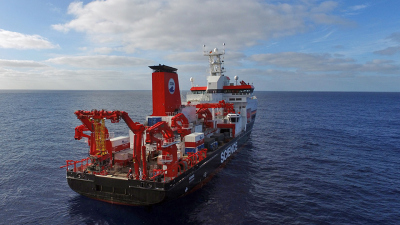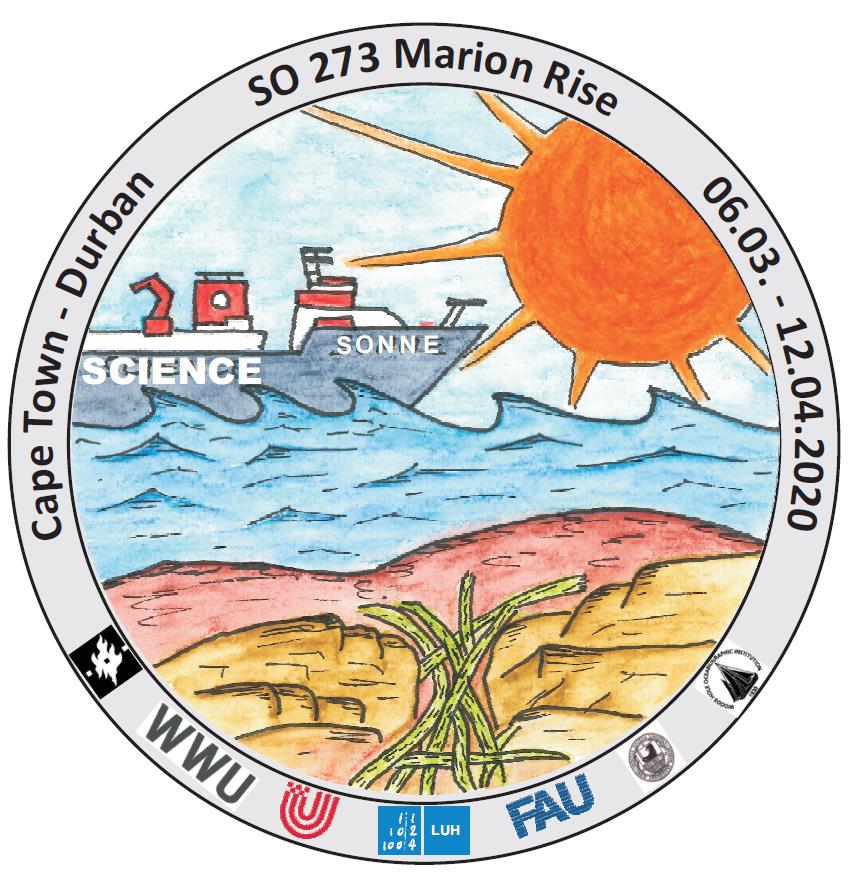Marine Expedition Sheds Light on the Interior of the Earth
The site of the study, the Marion Rise, is located on the Southwest Indian Ridge, which separates Africa from the Antarctic. At the ridge, two divergent tectonic plates move apart in ultra slow motion. They spread less than one centimetre a year – other tectonic plate boundaries move more than ten centimetres in the same period. This extremely slow spreading rate causes a unique situation. “Other ridge boundaries are covered by volcanic rock from near-surface layers of the earth. At the Southwest Indian Ridge this occurs via tectonic activity, which forms geographic features such as mountain ranges”, explains Professor Koepke. During this process, material originating from the interior of the planet – the Earth’s mantle – surfaces to the seabed. “Mantle rock on the surface of the Earth is incredibly rare. We therefore intend to collect samples and analyse them using a complex procedure”, says the mineralogist. The team aims to gain a better understanding of the mechanisms that cause tectonic plates to move apart in ultra slow motion.
Within the scope of the expedition, the research teams intend to create a map of the area by determining the topography, as well as the gravitational field and magnetism of the seabed. Moreover, they aim to understand why this section of the Southwest Indian Ridge, the Marion Rise, moved upwards. “Such a plateau is an anomaly, comparable to Iceland”, says Koepke adding “There is a theory that the Marion Rise – just as Iceland – originated from a hotspot, an area of long-term volcanic activity within the mantle of the Earth. However, we assume that there is another explanation, going back to the time when the Antarctic and Africa were still connected within the supercontinent of Gondwana”, says Koepke.
In addition to collecting rock samples and scientific data, the diving robot MARUM-QUEST will transmit live footage of the missions, which will be incorporated into suitable museum events throughout Germany.
Stormy weather and rough seas
The Marion Rise is located approximately 2,500 kilometers to the south-east of the southern tip of Africa – in the “Roaring Forties”. The region is notorious for its fickle weather conditions, as well as frequent storms and rough seas. Overall, 35 researchers will travel aboard the 115 metre-long vessel.
The Federal Ministry of Education and Research (BMBF) has been operating RV SONNE since 2014 and provides 860,000 euros of funding for the “MARION” project. In addition to Leibniz University Hannover, project partners include work groups and individual researchers from Freie Universität Berlin, University of Bremen, Friedrich-Alexander-Universität Erlangen-Nürnberg, University of Münster, University of Helsinki (Finland), Tongji University (China), Università di Modena e Reggio Emilia (Italy), as well as the American partners University of Wyoming, Florida State University and the Woods Hole Oceanographic Institution.




